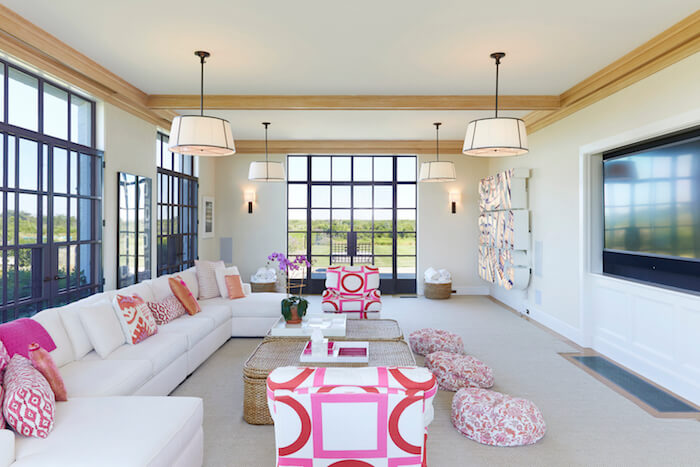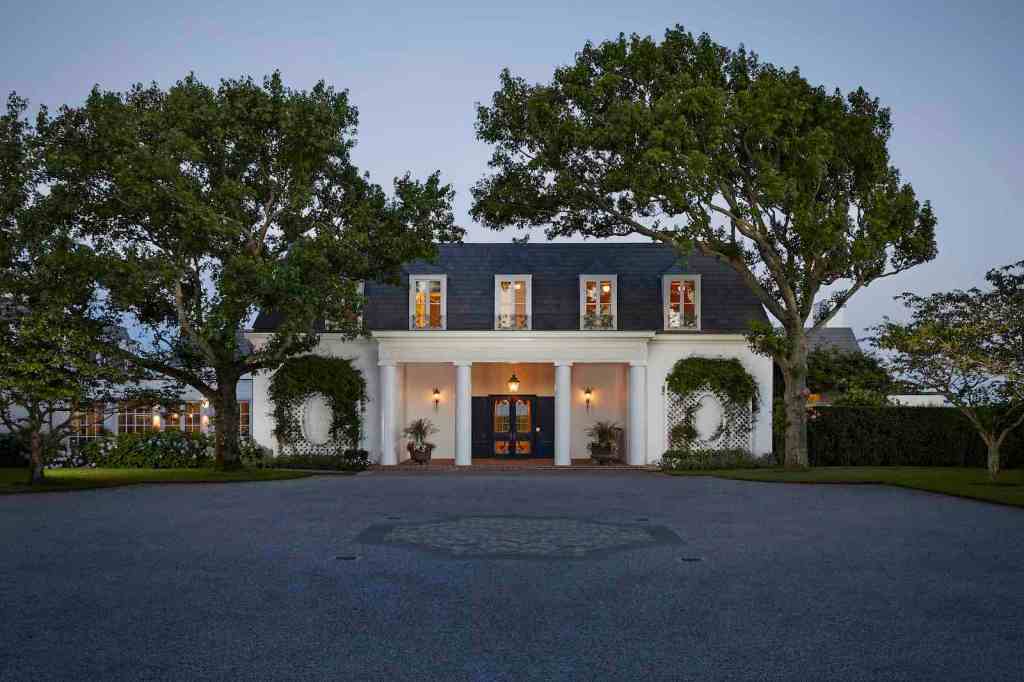The wedding of the century took place July 13, 1940. At least that’s the way the war-weary press reported on the marriage of pretty blonde Anne McDonnell to Henry Ford II. Life magazine reported, “Two great U.S. industrial fortunes were joined in Southampton, Long Island, on July 13…”
The Ford family hardly needs introduction. Henry Ford II (1917-1987) was the eldest son of Edsel Ford and eldest grandson of Henry Ford. He was president of the Ford Motor Company from 1945 to 1960, and under his leadership, Ford became a publicly traded corporation in 1956. Anne McDonnell (1920-1996) was the daughter of stockbroker James McDonnell and the granddaughter of Thomas E. Murray, one of the most prolific inventors in history, with 462 patents. Murray invented such devices as the dimmer switch and the screw-in fuse; he developed electric power plants in New York City, amassing a huge fortune.
The McDonnell-Murrays were some of the first Irish Catholics to build summer homes in Southampton; before the 1920s it was a purely WASP domain. Legend has it that the only reason Southampton Bathing Corp. admitted Murray as a member was because he had invented a filter to keep sand from flowing into his pool along with seawater, and the Bathing Corp wanted to use it in its pool.
The McDonnell-Murray clan was enormous; Anne had 14 brothers and sisters (and 83 first cousins!) and her Murray cousins had 11 children in the family. And it was enormously rich: the McDonnell house at Southampton had 50 rooms, a pool, tennis court, and a polo field; their New York apartment had 29 rooms and a separate kitchen just for the children. The entire family eventually owned 300 acres of oceanfront in Southampton and Water Mill. (Squabble Lane got its name because it separated two factions of the family, who enjoyed family infighting.)
At one point, Mrs. McDonnell gave each of her children three acres of land. Some sold after prices rose; others stayed, so that there are still McDonnells and Murrays inhabiting their family land. Sadly, the McDonnell name, once so prestigious, became obscure after the failure, in 1970, of McDonnell & Compant, the Wall Street brokerage house.
As the date of the wedding approached, excitement was high in Southampton; the Edsel Fords arrived in Southampton in their yacht, the Onika, anchored in Peconic Bay. Even old Mr. Ford showed up and danced with the bride. The new Mr. and Mrs. Ford eventually got on a cruise ship in San Francisco and set sail for Honolulu.
After their honeymoon, the newly married couple needed a place to live, of course, not to mention a summer home and a hunting lodge. They purchased what they considered the loveliest home in Grosse Pointe for their main house, a 40-something room red brick mansion on the shore of Lake St. Clair. The house had been designed by John Russell Pope, who had also designed the Jefferson Memorial and the National Gallery of Art. Across the lake, in Ontario, Ford purchased a hunting lodge with duck marsh, which he humorously referred to as Mud Creek Lodge. He spent weekends there hunting birds.
For a summer home, only Southampton would do, of course. The Fords purchased beautiful Halcyon Lodge on Gin Lane in 1946. Halcyon Lodge, built in 1893, is a rare example of Stick Style architecture in the village. In 1951 the Fords commissioned Modernist architect Phillip Johnson to design a glass pavilion addition to the house, which is still there today. When the Fords eventually sold Halcyon Lodge, they asked the buyers if they could dismantle the glass box and take it with them as they loved it so much. They were told no.

The Fords were ambitious. In the late ’50s the Fords began planning a grand new house. Ford spent many years buying contiguous parcels of land to create the estate he eventually named Fordune. (It’s difficult to say how much he spent, since so many parcels were combined and purchased at different times.) In 1957, Sports Illustrated wrote, “Brought to The Hamptons by his wife’s family, who inhabit a string of estates along the sea, Henry Ford II is building one of the greatest showplaces of the times. He has had to lay over a mile of blacktop through the fields of rye to reach the land which blankets 100 acres on the east end of town. The white brick house with its white columns and its steep gray slate roof stands before a driveway 100 feet square. Above the portico are four large baskets of cement fruit. Whole paneled rooms, fireplaces and parquet floors have been imported from European chateaux in the grand fin-de-siecle manner perfected by the Vanderbilts.”
Sports Illustrated estimated that Ford had already spent about $800,000 on land. It added, “So far the Fords have 1,082 feet of beach, but he would like to add another 1,000 feet.” Yet the Ford property was not the highest rated for taxes in Southampton. That honor went to the du Ponts’ home on Meadow Lane, which is now Calvin Klein’s property.
The new house, which cost $2.3 million to build and furnish, resembled a French chateau. On their frequent trips to Europe the Fords shopped for treasures. They were photographed at auctions, and their private collection became noteworthy. The furniture and art were shipped over to the United States and then transported to Grosse Pointe and Southampton by van.
The massive house is 16,000 square feet, with a 48-foot long living room with French parquet floors. The main house is flanked by three wings: one with servant/guest rooms; one with an enormous kitchen; and one with a huge library. Of course, the estate featured pretty flower gardens, ponds, rolling lawns, as well as a pool and tennis court.
Unfortunately, Ford didn’t get the enjoy the estate, which eventually included 235 acres, for all that long. He and Anne divorced in 1964 and she was awarded the estate. Both eventually remarried.

In 1975 Anne sold the estate to Italian financier Carlo Traglio. He paid the bargain price of $1.8 million, $500,000 less than Ford spent to build just the mansion. Traglio then subdivided the property, keeping the main house and 44 acres of oceanfront for himself. The other acres were divided into a gated enclave of 40 homes. (The Hilton family owns one of them, comprising 2.7 acres.)
The name of the enclave? Fordune, of course.
The estate, now known as Jule Pond, is represented by Bespoke Real Estate.























